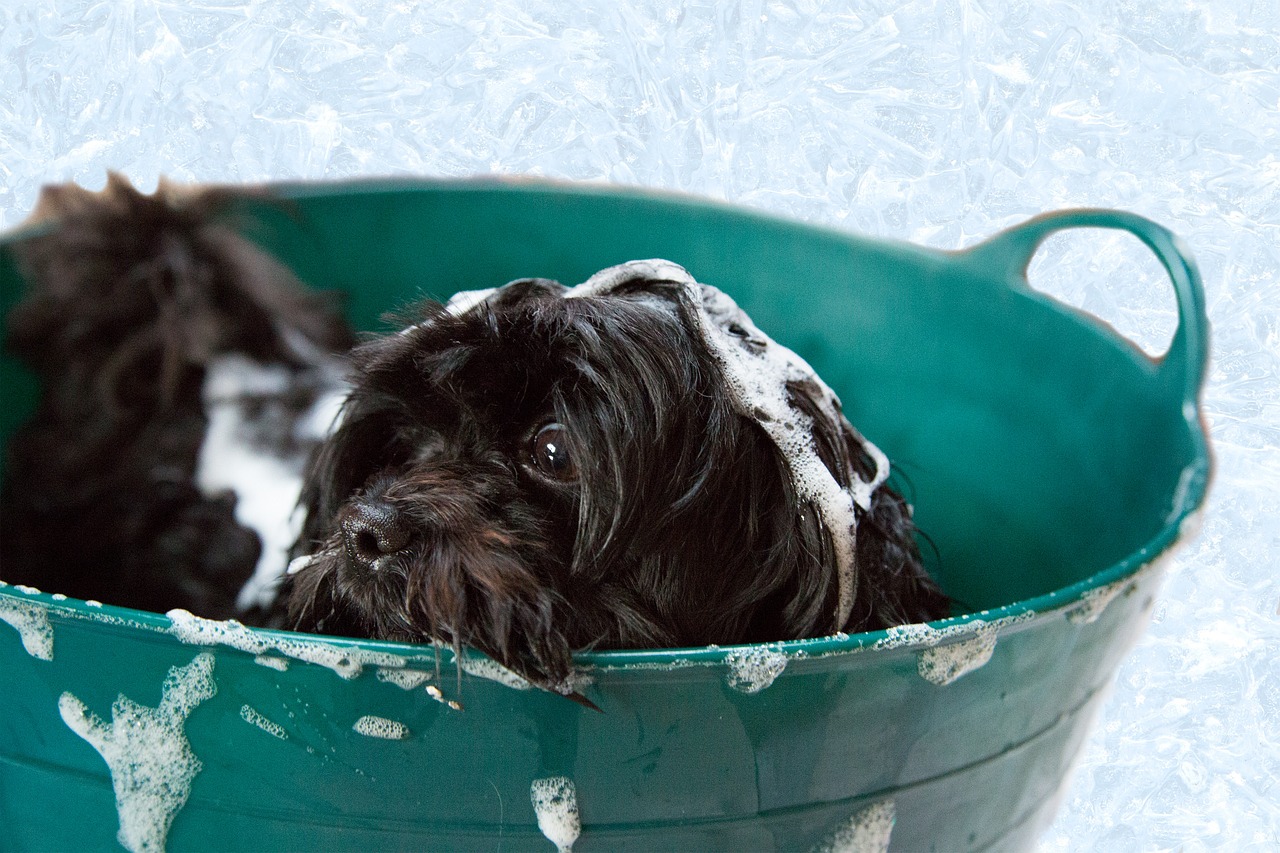As the year rolls
away from winter, it tends to pick up some dirt along the way! Spring cleaning often includes a plunge in
soapsuds for your furry companion.
Bathing can free your pet’s hair of dirt, pests, and loose fur. Unfortunately, some soaps can strip the
valuable oils from your pet’s fur and leave its skin too dry. Good bathing
principles can save you a lot of time and money as you and your pets get more
active out-of-doors.
To properly bathe a pet, think of the task in sections:
before bathing, during bathing, and after bathing. Then break these down into manageable
steps. You are more likely to remember
all of your materials, get the job done faster, and cause less stress to your
pet when you have a plan.
Tips for Bath Preparation
Consider your pet
How does your pet feel about bathing? If they are okay with it – yay! If not, you might want to do some
desensitization work around their fears/dislike. Things you can try:
- Feed treats to pet while pet is in the bathtub.
- Feed pet their meals in the bathtub and around
grooming tools. - Try turning the bathwater on in a way that
doesn’t touch your pet and offer a high-value treat. - If your pet has a time-limit of tolerance for
bathing, don’t feel you have to do everything at once. You can stretch bathing out over several sessions
if that works better for your pet.
Select the right Grooming Tools
Every pet is different.
A Maine Coon cat is going to require a different approach and different
tools than a Dalmatian dog. Get
professional advice when you go shopping for grooming tools. A short-haired dog may only require a hound
glove (glove fitted to the hand with short, stiff bristles that pull out shed
hair) while a long-haired cat benefits from a slicker brush (brush with bent
wire bristles that pull out thick/long shed hair).
Frequency of bathing depends on the pet as well. With a very mild pet soap or shampoo, many
dogs and cats can be bathed regularly if required. However, pets like rabbits
should not be bathed very often, intensely, or at all if it can be avoided.
Consult your veterinarian and your groomer for recommended frequency and what
kinds of soaps and hair treatments are recommended.
Gather your Materials
No matter what pet you are bathing, they will benefit from
these materials:
- Towels
- Washcloth for face and head washing
- Appropriate pet soap/shampoo and conditioner
- Suitable grooming tools
- Non-slip mat for the bottom of the tub or sink
- Plenty of towels around the tub or sink to soak
up water the pet might shake off - Hose or pitcher for soaking the pet’s fur
- Low and high-value treats in a container you can
put within easy reach
Depending on the pet, you might find having a harness or
collar to keep them from lunging out of the tub might be useful. You may also want to patronize one of the
‘U-Wash’ facilities that are growing in popularity, which have leash
attachments, pet-specific products, and grooming tools.
Lay It Out
Put all your tools out close at hand! There’s nothing worse in the middle of a bath
than finding out that you’ve laid your materials a little too far away to
reach. Put a small table next to the tub
or sink to hold your things so they don’t spend the time balancing precariously
on the side of the tub or propped on the sink.
It’s good to have an order, from first thing you’re using to the
last. As you finish using something,
having a carryall that you can dump it into is a great way to keep things
organized for the next time.
Brush Before Or After?
Brushing beforehand can help detangle before the bath
happens, so it’s not a bad idea.
Shedding coats can be helped along with a bath and a dryer can blow a
bunch of that troublesome coat right out without you having to touch it with a
brush. Too, if you’re dealing with a lot
of tangles, you might want to wash and condition some of the dirt and tangles out
before trying to get through it with a comb.

